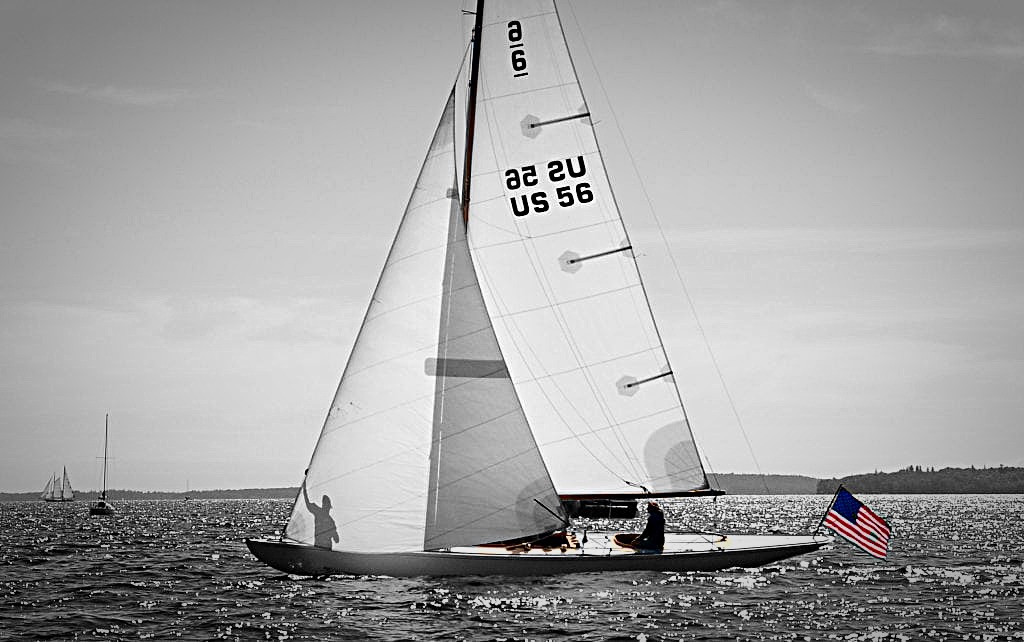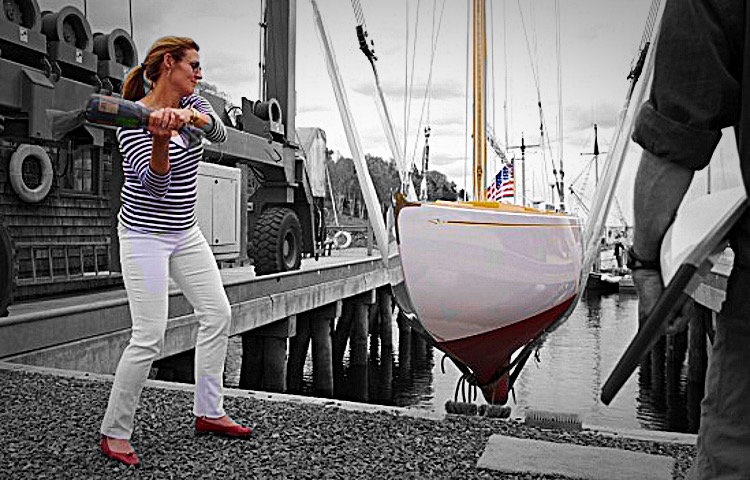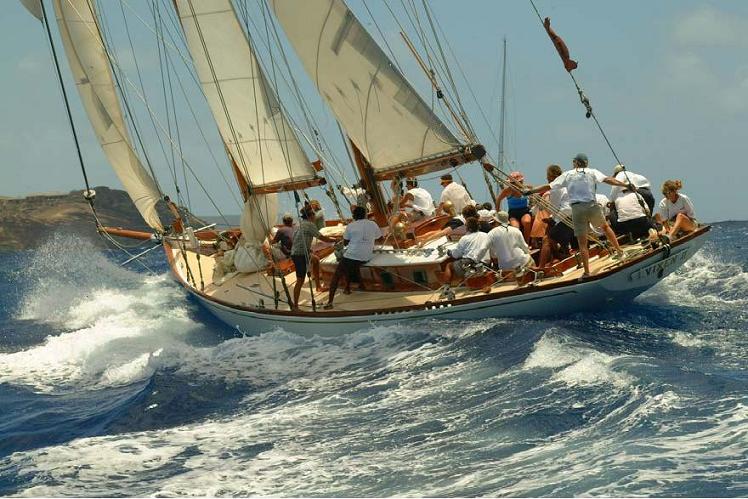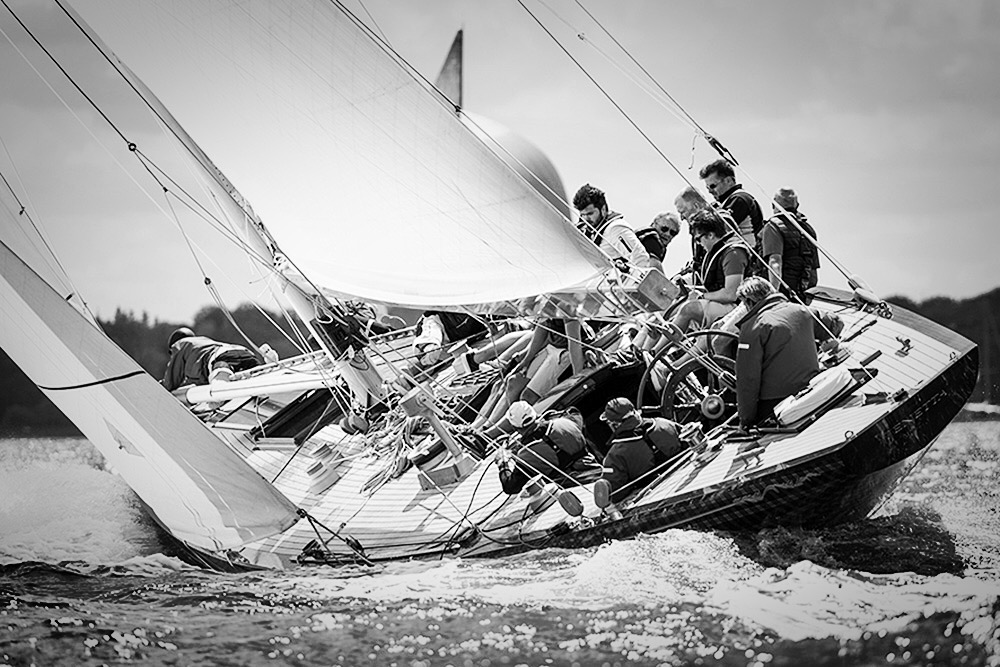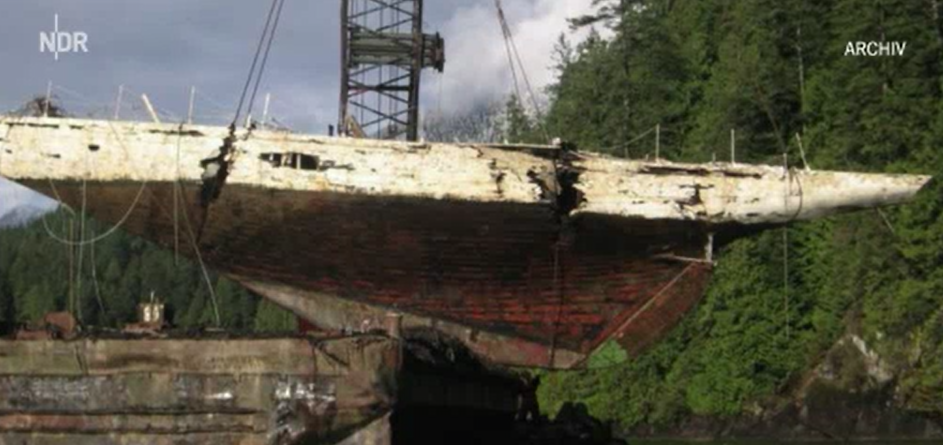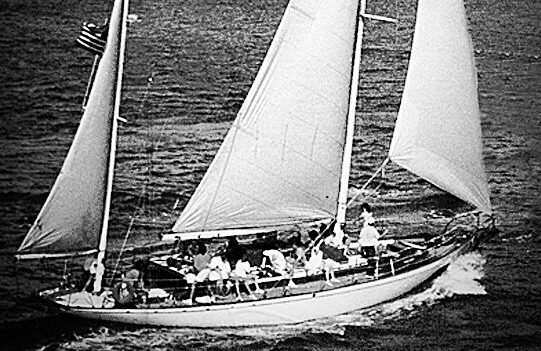
Sail Number: D 7
Vessel Type: 15-Metre Class
ISTRIA Specifications:
LOA: 98’3″ / 29.95m – LOD: 78′ 7″ / 23.94m – LWL: 48’6″ / 14.78m – Beam 13’8″ / 4.16m – Draft 9’3″ / 2.82m – Hull Number: – Designer: Charles Ernest Nicholson – Built By: Camper & Nicholson, Gosport, Hampshire – Original Owner: Sir Charles Carrick Allom, – Current Owner: – Year Built: 1912 – Hull Material: Laminated Wood – Gross Displacement: 40 tons – Status: Scuttled Norway 1924
Historical:
The 15mR racing yacht Istria was designed by Charles Ernest Nicholson and built at the Camper & Nicholsons yard in Gosport, Hampshire, in 1912 for Sir Charles Carrick Allom. She was the first large yacht to be built with laminated frames and planking to save weight, the first to feature a marconi topmast and the first to feature a dinghy cockpit. She was broken up in 1924 in Norway.
The First Marconi Mast – For Further Reading… Marconi and the Letter S:
Until, British yacht designer, Charles E. Nicholson developed ISTRIA’s new mast, the topsail was laced to a jack-yard, which was then hoisted from the heavy solid cored topmast. The cleverness of the new mast lies wherein the topmast were hollow and were extended to the full height of a jack-yard, and the leading edge of the topsail is hoisted on a track for its full length. The main advantages of this design lay in improved sail shape.
The new rigs, were known at the time as “fish-pole” mast. These mast, with marconi-like rigging, were adaptions of the Bermuda rig, forebears of the Jamaica sloops of the 17th century.
After ISTRIA came the 1917 William Gardner designed VARUNA, the Larchmont Yacht Club’s flagship, She was built for, the Commodore of the club, James B. Ford of Rye, New York. VARUNA was the first American designed yacht fitted out with the innovative and controversial Marconi rig. VARUNA was skippered by Butler Whiting and she proved conclusively, for the first time, that the Marconi rig was the fastest. The Marconi rigs came out in force at the close of World War I, and owe their success and use to ISTRIA and Larchmont O VARUNA.
In November in the year 1920, Mr. Charles Ernest Nicholson protested against the use of the name Marconi, and suggested that it should be called the jib-header. His recommendations found and audience citing that the terminology was incorrect and meaningless. In England the term Marconi was substituted and Marconi, Bermuda or Mudian was used and remains to this day.
By the end of “Great War” and the beginning of the early 20’s many designers were embracing this new concept. The 1906 Nicholson 28-metre NYRIA, was re-rigged and fitted out with a new jib-headed mainsail. Francis Sweisguth designer of the Star class boat re-rigged the stars to the new Marconi. These great success’s paved the way, revolutionizing the rig for generations to come. “Marconi Rigs,” development of the often misused term Bermuda rig, or Bermudian rig (although non-Bermudians who are ignorant of the proper adjectivization often use Bermudan, this should be avoided as it causes offense to Bermudians.
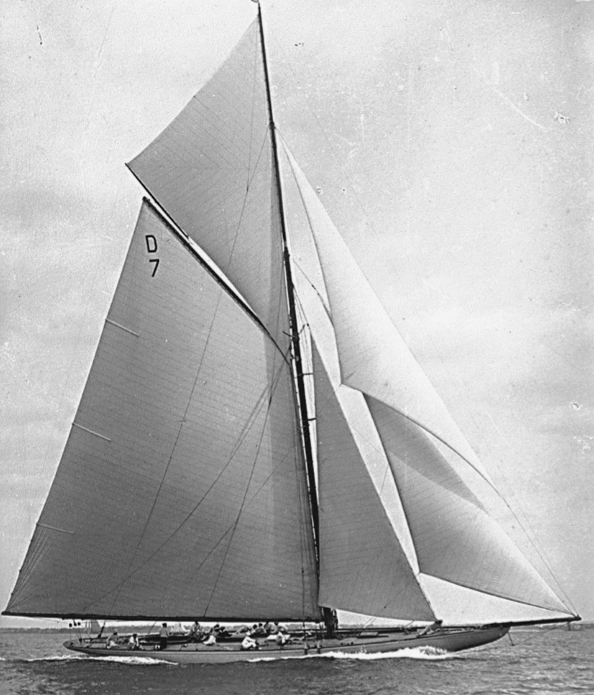
Design
In order to reduce the wetted surface yet retain stability, Istria’s hull shape consisted of a long forward overhang and a wide beam at the waterline. Yachting Monthly described her as “Short on the waterline, with large displacement, a fine tail and a useful snout, she would not have been a pretty vessel had she not proved clever. But as I have always insisted that efficiency is beauty, the blue ‘fifteen’ was admired”. Her midsection also featured a distinctive tumblehome, a feature that Nicholson would repeat in subsequent boats designed to the IYRU International Rule
Her first sailing season brought great success, winning 23 out of 36 races in the very competitive 15-meter class. Her unique rigging and the extreme length of her mast caused it to be known as a Marconi rig. The topmast and club topsail yard were in practically one piece. While at a Harwich regatta, Colonel Duncan D. F. Neilll, who sailed the 23-metre Shamrock commented “what kind of spar is that?” a writer on the London field responded with “why that’s a Marconi spar, and when they run out of beer on the yacht they can wireless for more.”
Dinghy Cockpit
For the sake of safety in case a yacht should flounder, the rules at the time stated that a dinghy should be on the deck of the yacht during racing, and was typically stored over the main skylight. In order to reduce the windage, Nicholson created an open dinghy with a gunwale overhang which could be recessed into an aperture of the deck of the yacht, the open dinghy cockpit thus serving as the yacht’s cockpit. When the Istria attended her first race, all the opposition protested against the arrangement. However, after successfully proving that the dinghy could be launched in under 10 seconds, the protests subsided.
Available for Rebuilding
G.L. Watson & Co. Ltd. (Website)
The 15 Metre class evolved in three key stages. The initial yachts gave way to a second generation with iterative improvements until 1912. Then, Istria was launched and the class, the rule that underpinned it and the evolution of racing yacht rigs was changed for good.
Istria, the most significant 15 Metre ever built, was broken up in Norway in 1924. The 15 Metre class is now substantially revived with the prospect of four yachts racing (Tuiga, Hispania, Mariska and The Lady Anne). G.L. Watson & Co. has traced sufficient archival data from a range of sources to allow an authentic re-build of Istria.
